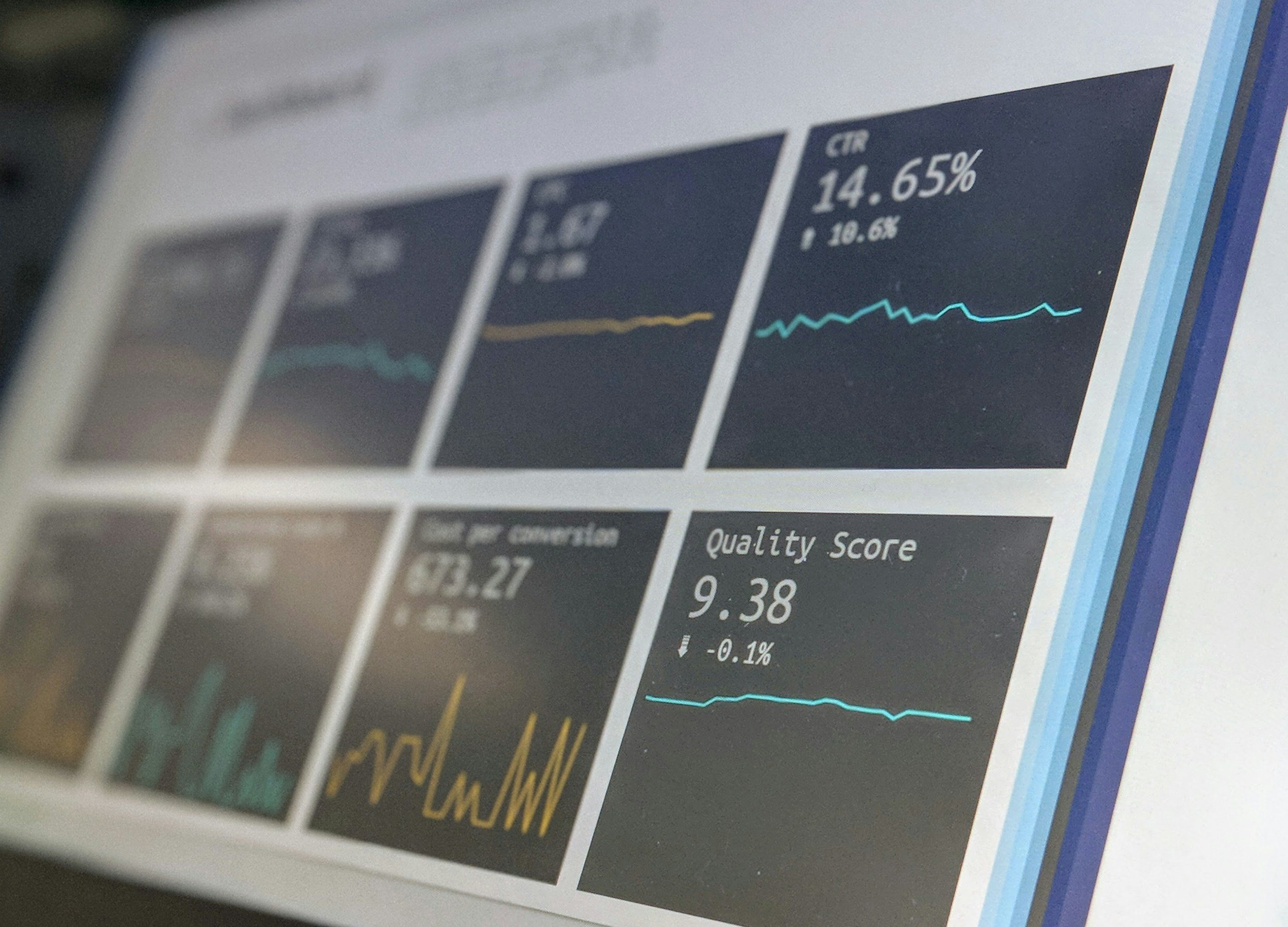
Client: Salesforce (Internal Project)
Product Manager Dashboard
Project Details:
Project Duration: March '25- May '25
Role: Sr. UX/UI Designer
Overview & Objective
Goal: Centralize Salesforce product user feedback from multiple disconnected systems into one unified dashboard
Problem:
→ Salesforce feedback was scattered across four separate systems that did not communicate with each other
→ Product Managers had to manually sort and analyze data, leading to inefficiency, disorganization, and time consumption
Solution:
→ Designed a centralized feedback dashboard that aggregates insights from all systems
→ Enabled Product Managers to identify critical feedback and prioritize tasks by volume and impact
Key Outcome:
→ Streamlined the feedback review process
→ Improved efficiency and decision-making for Product Managers through a single source of truth
Business Context
Salesforce operates four primary feedback systems — Idea Exchange, VoC, Voice of Services, and Support Tickets; each separately gather insights across all Salesforce products
Designed a pilot dashboard for the Experience Product unifying insights from all systems
Salesforce has a long term initiative to centralize user feedback all in one place to improve visibility, prioritization, and product decision-making
Scalable framework designed to extend across all Salesforce product teams
Long-term vision: integrate AI and data correlation to track sentiment, recurring themes, and emerging issues
Discovery & Research
Researched the daily routine of a Salesforce Product Manager role to understand their goals, workflows, and priorities
Studied Product Manager feedback system processes to identify what insights would drive effective next steps
Created early low-fidelity wireframes for conceptual discussion
Iterated and refined designs based on leadership feedback, merging multiple tabs into one streamlined overview
Finalized a detailed low-fidelity plan defining project goals, data conditions, and next-phase direction
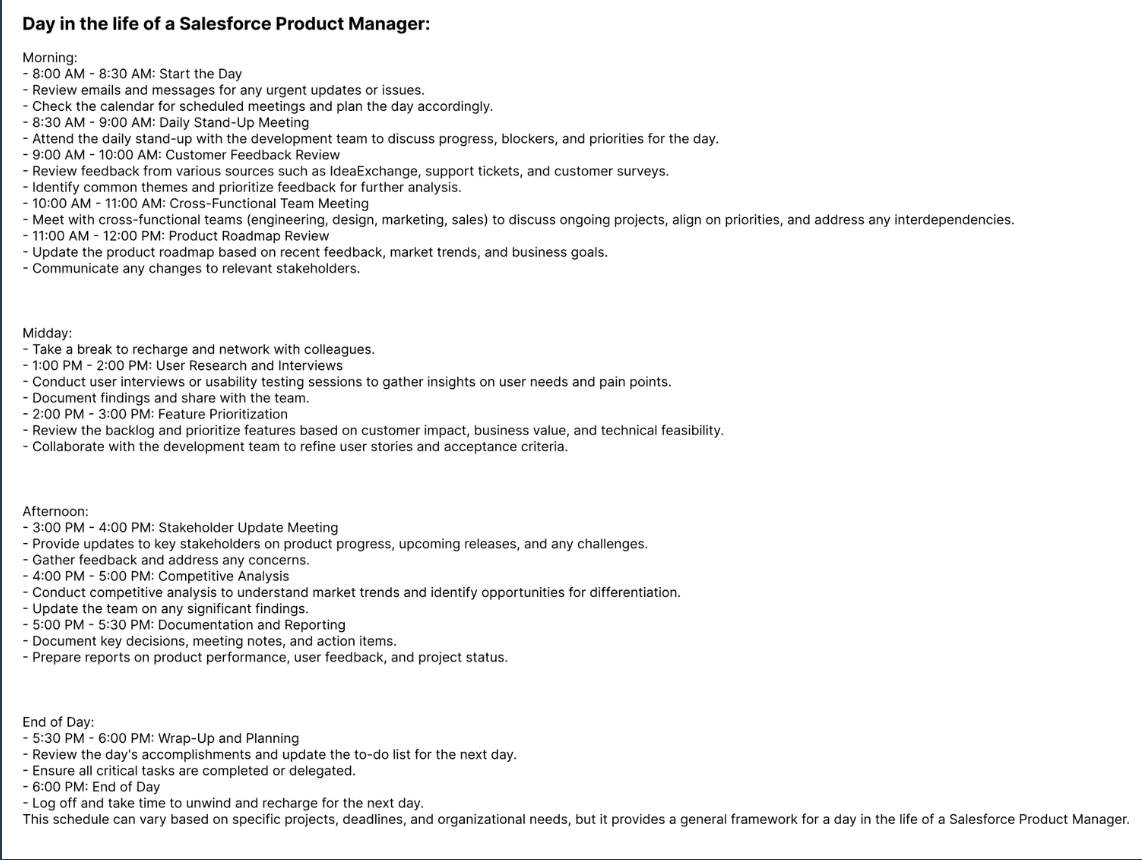
First, I did research on what a day in the life of a Product Manager would typically do from morning to end of day.

I also took notes on the feedback systems that salesforce uses in order to have a better understanding on how they capture the feedback.

I outlined a character Bryan Lee as the Product designer. I focused on things such as responsibilities, most important aspects, etc.
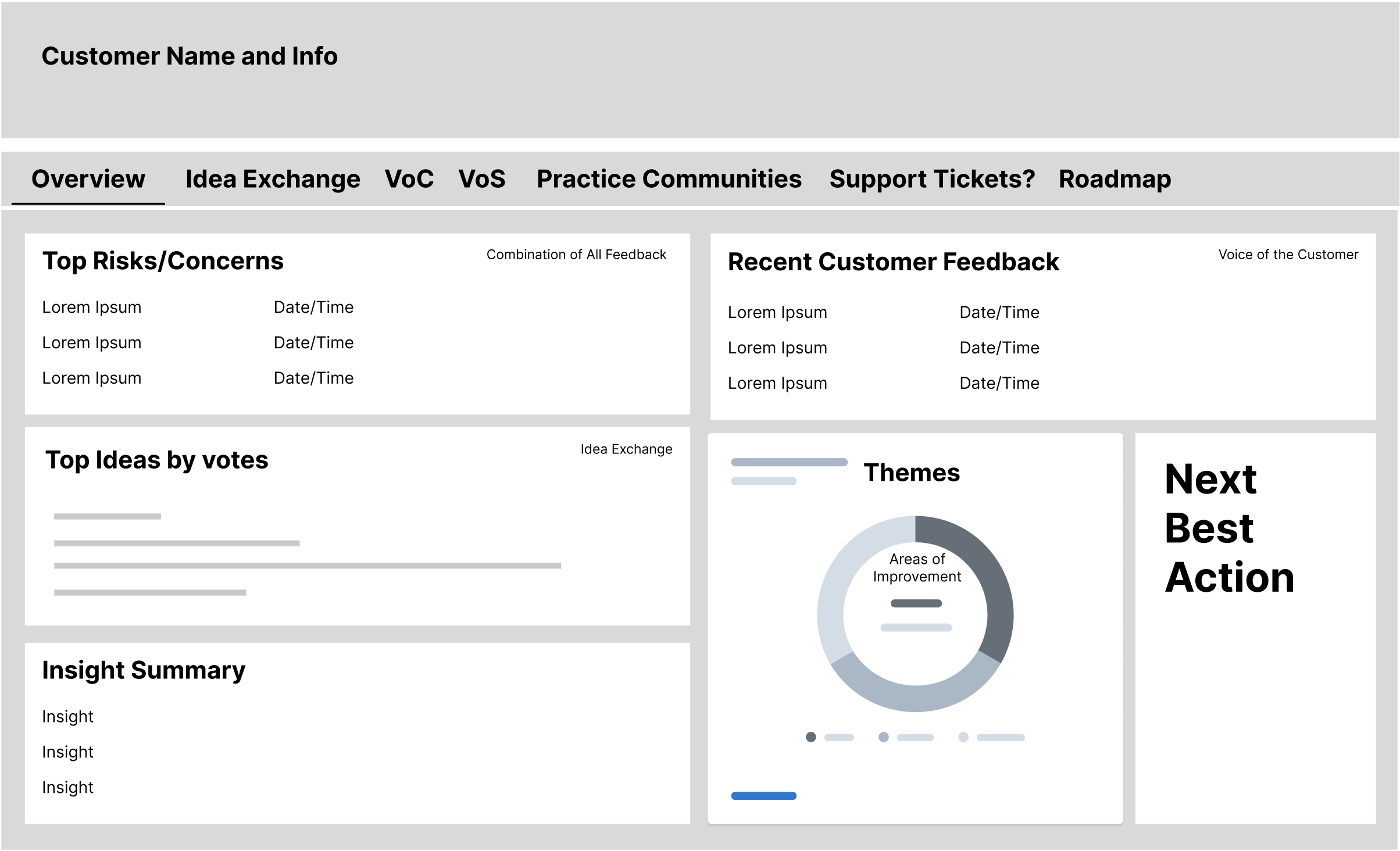
I was instructed to do a very bare boned low-fidelity wireframe in order to nail down what components would be best to display.

I did a few iterations on the low-fidelity wireframes in order to have a good idea on where components should be used and where they should be placed.
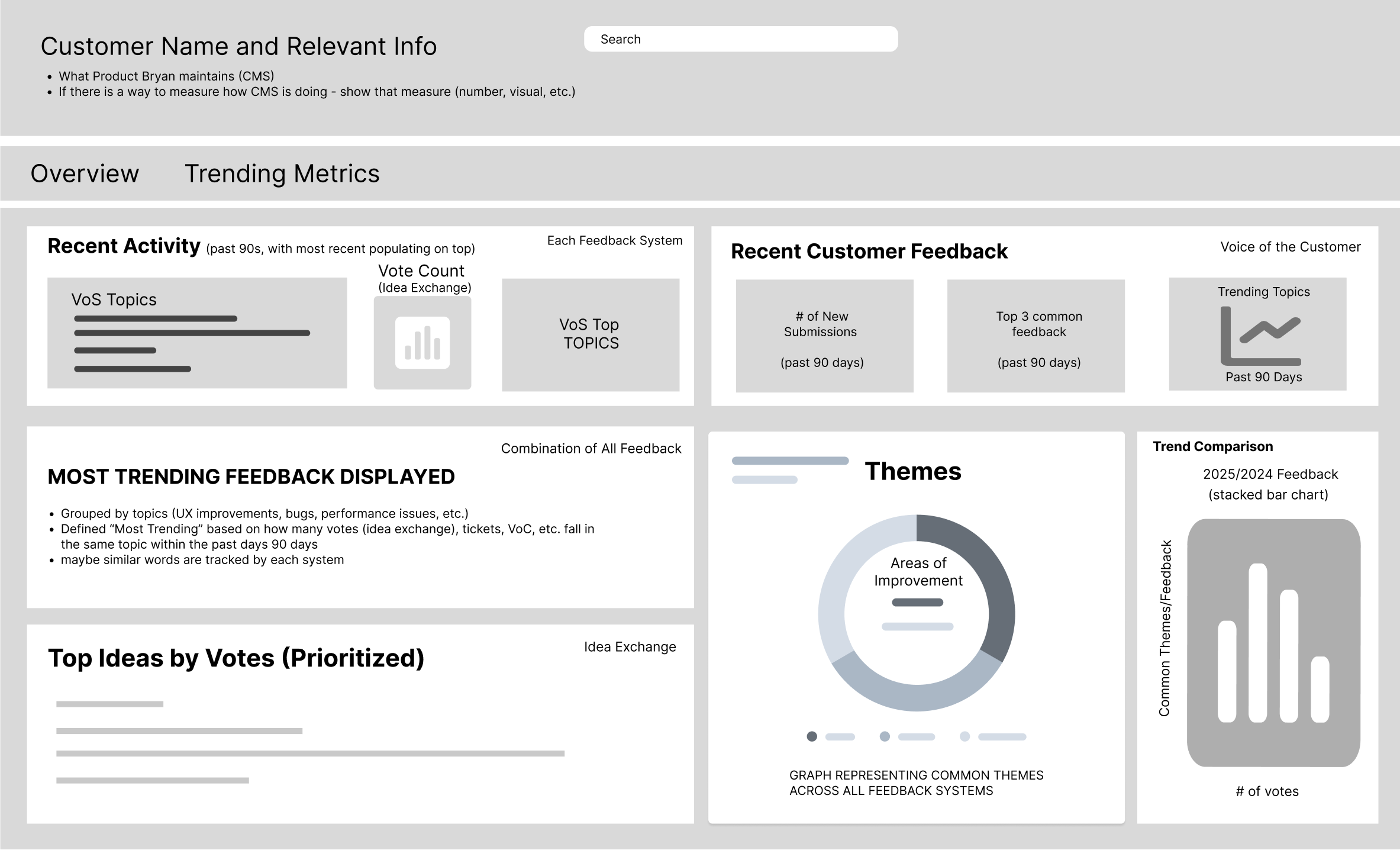
I became a little more detailed with my low-fidelity wireframe in order to make it clearer when I moved onto the high-fidelity wireframes.

I broke out each component and created what I thought would be useful user stories when creating the detailed designs.
Design Iteration Stage
Developed a user persona, “Bryan Lee,” to represent a Salesforce Product Manager and define core goals for the dashboard.
Outlined the project objectives and how the dashboard would support Product Managers in making data-driven decisions.
Created and presented high-fidelity prototype design iterations to leadership for review and feedback.
Refined the prototype through multiple rounds of iteration based on stakeholder feedback.
Final deliverables included high-fidelity mockups and a user overview slide summarizing Bryan’s role, goals, and dashboard purpose.
Challenges Faced:
Worked independently on this internal initiative without access to cross-functional team member assistance (ex/ Technical Architects, Solution Architects, etc.)
Faced limited visibility into data storage and integration methods across Salesforce feedback systems
Navigated technical uncertainties by researching independently, consulting other Product Designers, and connecting with SMEs
Maintained design progress and alignment despite resource and data access constraints
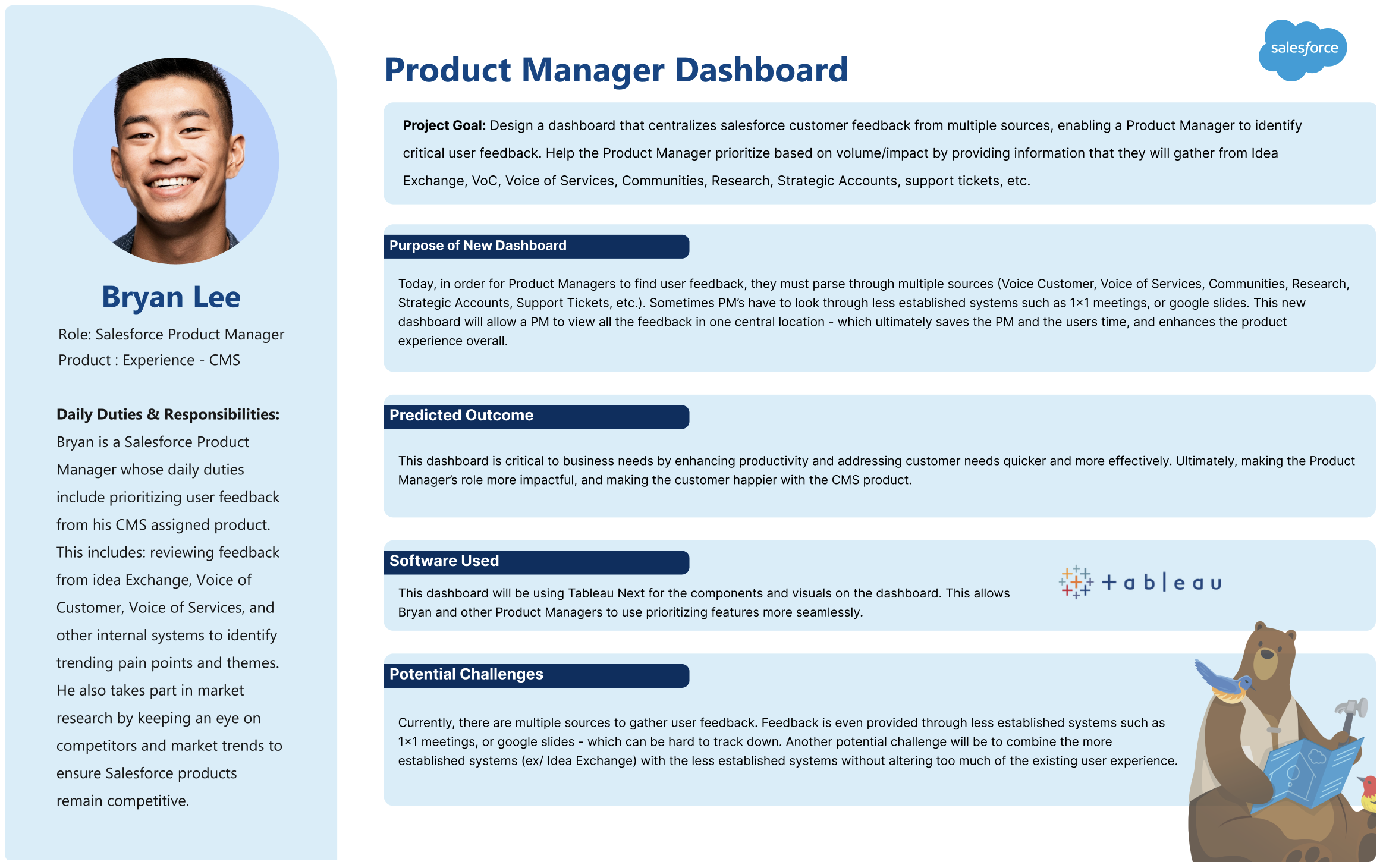


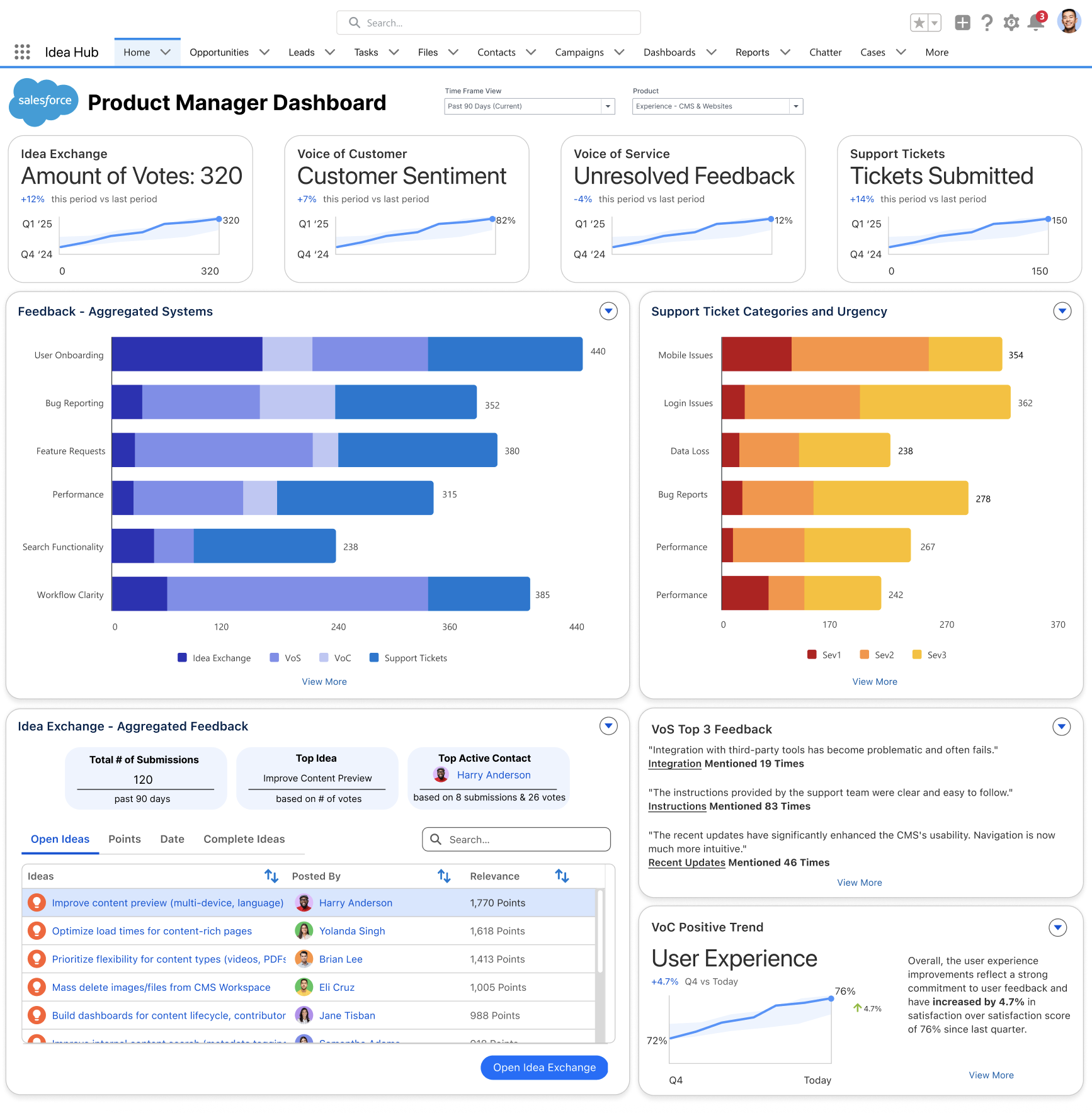

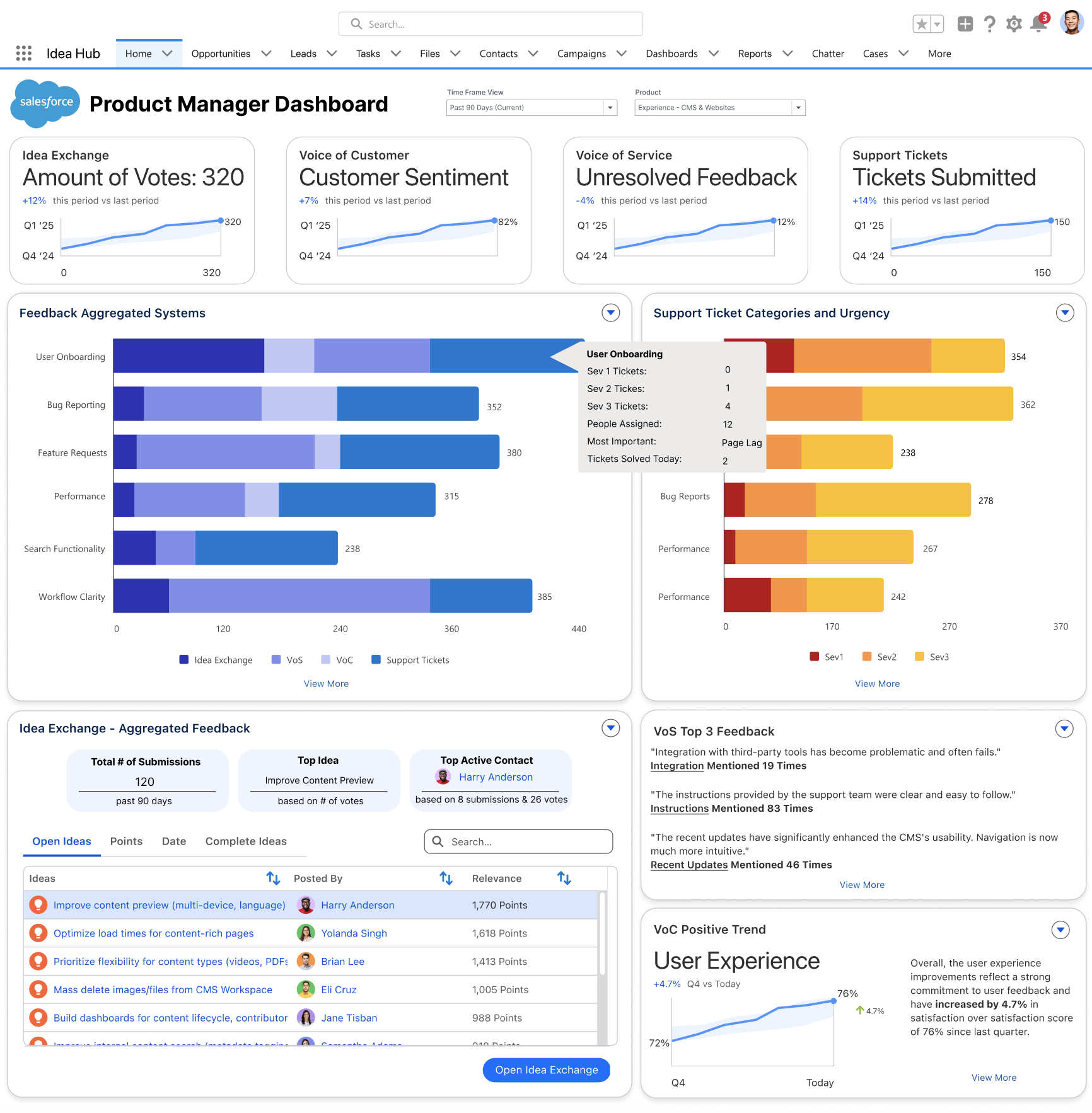
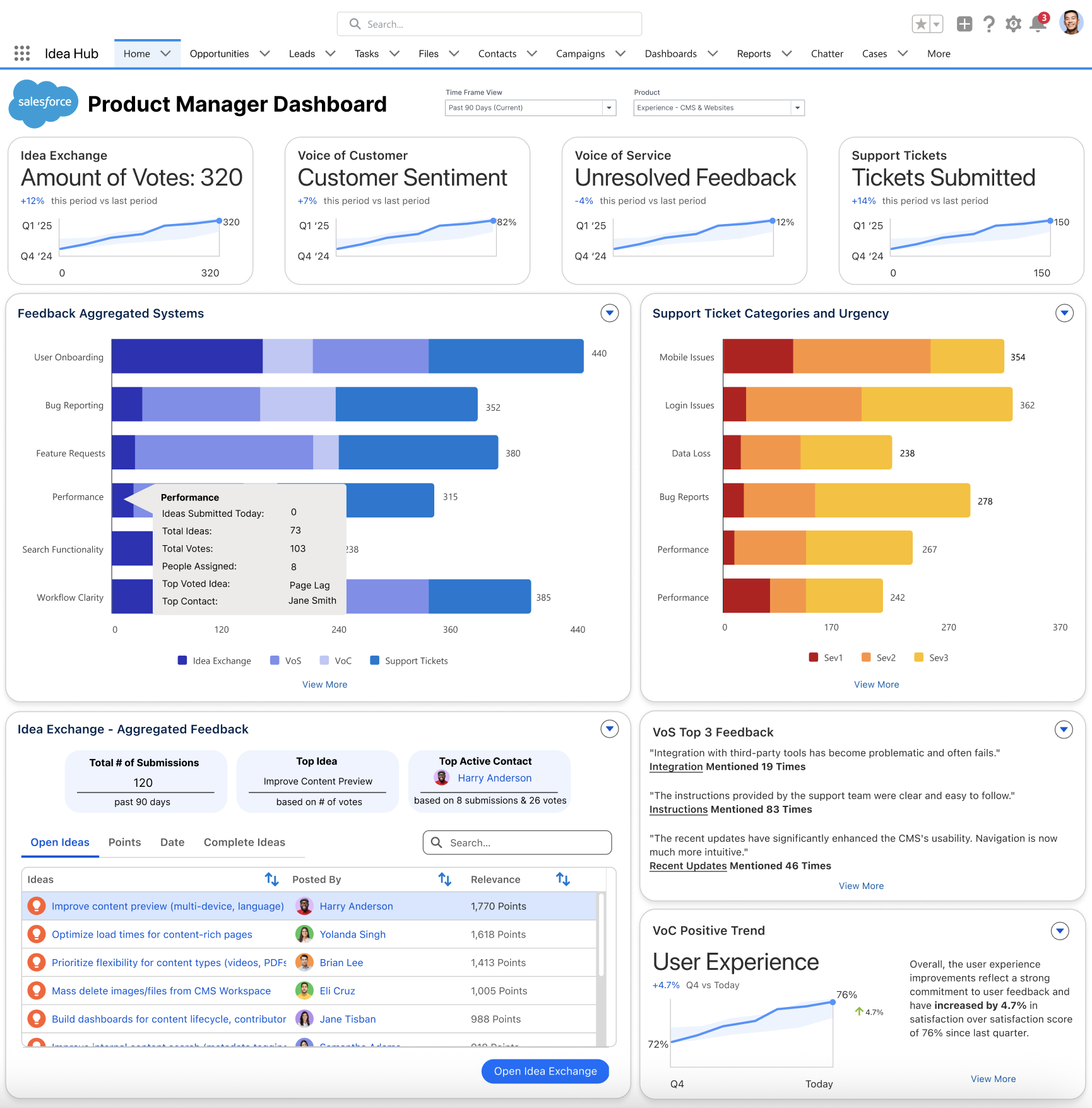
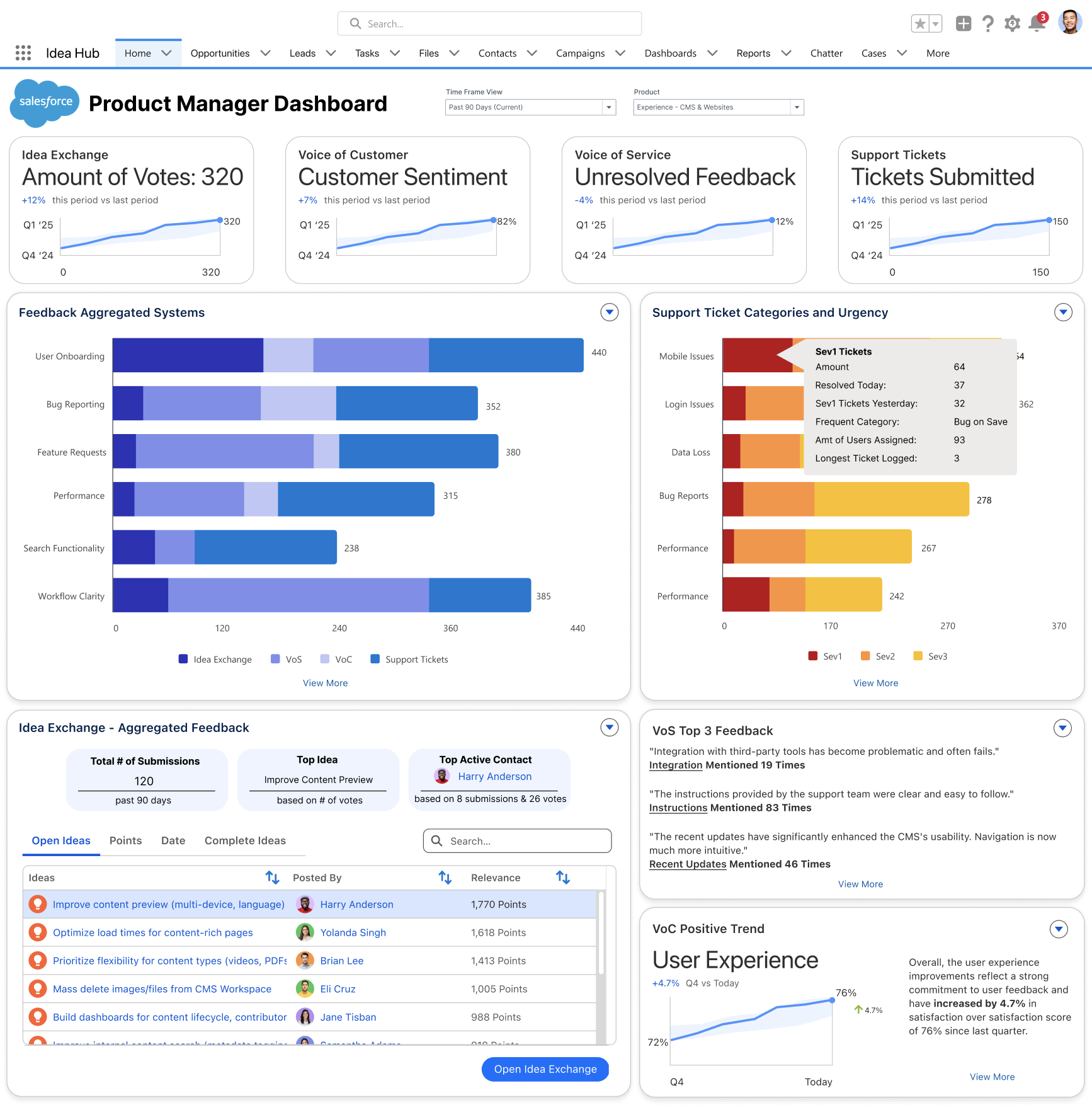
Outcome & Impact
Granted creative freedom to explore data-driven design solutions despite project constraints
Proposed innovative data concepts such as tracking recurring meeting phrases and performance trends over time
Delivered an exploratory dashboard design that laid the foundation for a unified Salesforce feedback system; helping lay the groundwork for when development is scheduled
Leadership was highly satisfied with the direction and credited the work for advancing Product Manager engagement
Final Version - Clickable Prototype
